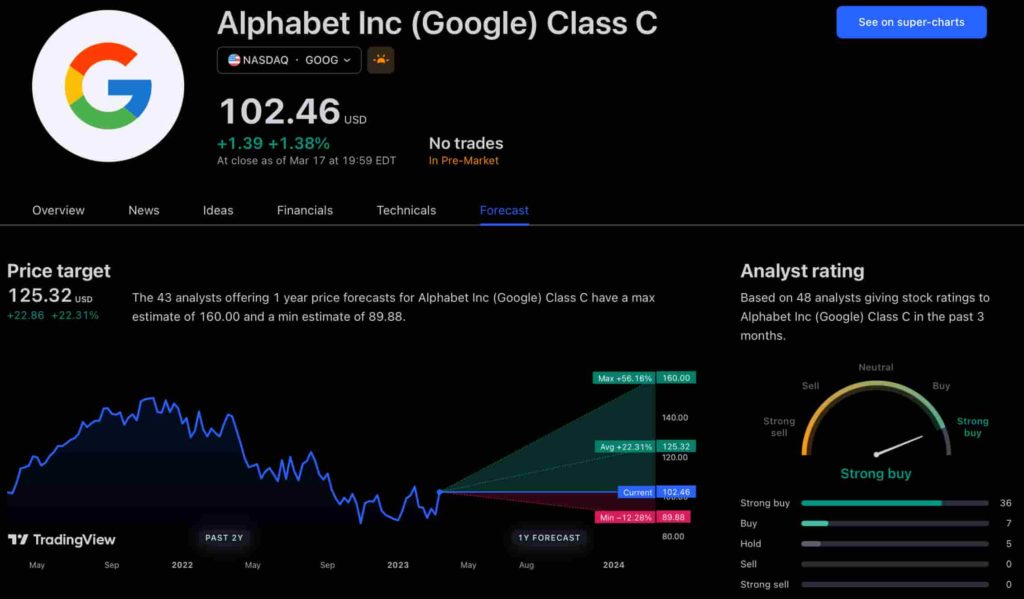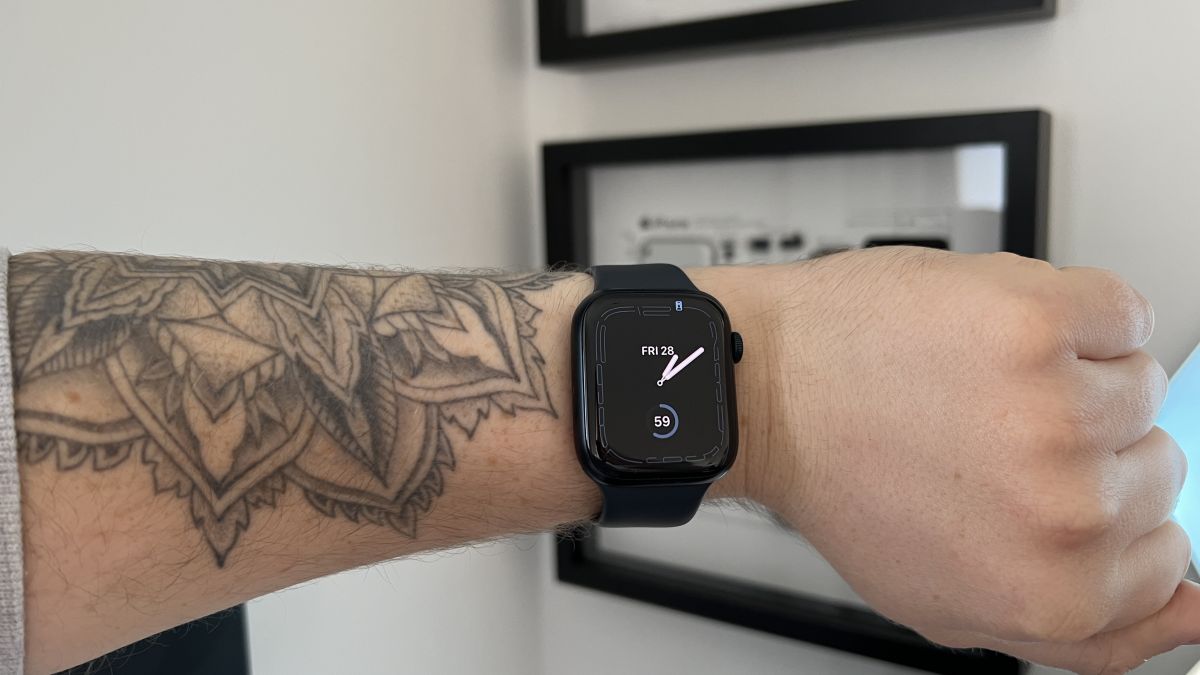The new app is called watchGPT and as I tipped off already, it gives you access to ChatGPT from your Apple Watch. Now the $10,000 question (or more accurately the $3.99 question, as that is the one-time cost of the app) is why having ChatGPT on your wrist is remotely necessary, so let’s dive into what exactly the app can do.
NEWS
Threat of inauguration violence casts a long shadow over social media

As the U.S. heads into one of the most perilous phases of American democracy since the Civil War, social media companies are scrambling to shore up their patchwork defenses for a moment they appear to have believed would never come.
Most major platforms pulled the emergency break last week, deplatforming the president of the United States and enforcing suddenly robust rules against conspiracies, violent threats and undercurrents of armed insurrection, all of which proliferated on those services for years. But within a week’s time, Amazon, Facebook, Twitter, Apple and Google had all made historic decisions in the name of national stability — and appearances. Snapchat, TikTok, Reddit and even Pinterest took their own actions to prevent a terror plot from being hatched on their platforms.
Now, we’re in the waiting phase. More than a week after a deadly pro-Trump riot invaded the iconic seat of the U.S. legislature, the internet still feels like it’s holding its breath, a now heavily-fortified inauguration ceremony looming ahead.

(Photo by SAUL LOEB/AFP via Getty Images)
What’s still out there
On the largest social network of all, images hyping follow-up events continued to circulate mid this week. One digital Facebook flyer promoted an “armed march on Capitol Hill and all state Capitols,” pushing the dangerous and false conspiracy that the 2020 presidential election was stolen.
Facebook says that it’s working to identify flyers calling for “Stop the Steal” adjacent events using digital fingerprinting, the same process it uses to remove terrorist content from ISIS and Al Qaeda. The company noted that it has seen flyers calling for events on January 17 across the country, January 18 in Virginia and inauguration day in D.C.
At least some of Facebook’s new efforts are working: one popular flyer TechCrunch observed on the platform was removed from some users’ feeds this week. A number of “Stop the Steal” groups we’d observed over the last month also unceremoniously blinked offline early this week following more forceful action from the company. Still, given the writing on the wall, many groups had plenty of time to tweak their names by a few words or point followers elsewhere to organize.
With only days until the presidential transition, acronym-heavy screeds promoting QAnon, an increasingly mainstream collection of outrageous pro-Trump government conspiracy theories, also remain easy to find. On one page with 2,500 followers, a QAnon believer pushed the debunked claim that anti-fascists executed the attack on the Capitol, claiming “January 6 was a trap.”

(Photo by Win McNamee/Getty Images)
On a different QAnon group, an ominous post from an admin issued Congress a warning: “We have found a way to end this travesty! YOUR DAYS ARE NUMBERED!” The elaborate conspiracy’s followers were well represented at the deadly riot at the Capitol, as the many giant “Q” signs and esoteric t-shirt slogans made clear.
In a statement to TechCrunch about the state of extremism on the platform, Facebook says it is coordinating with terrorism experts as well as law enforcement “to prevent direct threats to public safety.” The company also noted that it works with partners to stay aware of violent content taking root on other platforms.
Facebook’s efforts are late and uneven, but they’re also more than the company has done to date. Measures from big social networks coupled with the absence of far-right social networks like Parler and Gab have left Trump’s most ardent supporters once again swearing off Silicon Valley and fanning out for an alternative.
Social media migration
Private messaging apps Telegram and Signal are both seeing an influx of users this week, but they offer something quite different from a Facebook or Twitter-like experience. Some expert social network observers see the recent migration as seasonal rather than permanent.
“The spike in usage of messaging platforms like Telegram and Signal will be temporary,” Yonder CEO Jonathon Morgan told TechCrunch. “Most users will either settle on platforms with a social experience, like Gab, MeWe, or Parler, if it returns, or will migrate back to Twitter and Facebook.”
That company uses AI to track how social groups connect online and what they talk about — violent conspiracies included. Morgan believes that propaganda-spreading “performative internet warriors” make a lot of noise online, but a performance doesn’t work without an audience. Others may quietly pose a more serious threat.
“The different types of engagement we saw during the assault on the Capitol mirror how these groups have fragmented online,” Morgan said. “We saw a large mob who was there to cheer on the extremists but didn’t enter the Capitol, performative internet warriors taking selfies, and paramilitaries carrying flex cuffs (mislabeled as “zip ties” in a lot of social conversation), presumably ready to take hostages.
“Most users (the mob) will be back on Parler if it returns, and in the meantime, they are moving to other apps that mimic the social experience of Twitter and Facebook, like MeWe.”
Still, Morgan says that research shows “deplatforming” extremists and conspiracy-spreaders is an effective strategy and efforts by “tech companies from Airbnb to AWS” will reduce the chances of violence in the coming days.
Cleaning up platforms can help turn the masses away from dangerous views, he explained, but the same efforts might further galvanize people with an existing intense commitment to those beliefs. With the winds shifting, already heterogeneous groups will be scattered too, making their efforts desperate and less predictable.
Deplatforming works, with risks
Jonathan Greenblatt, CEO of the Anti-Defamation League, told TechCrunch that social media companies still need to do much more to prepare for inauguration week. “We saw platforms fall short in their response to the Capitol insurrection,” Greenblatt said.
He cautioned that while many changes are necessary, we should be ready for online extremism to evolve into a more fractured ecosystem. Echo chambers may become smaller and louder, even as the threat of “large scale” coordinated action diminishes.
“The fracturing has also likely pushed people to start communicating with each other via encrypted apps and other private means, strengthening the connections between those in the chat and providing a space where people feel safe openly expressing violent thoughts, organizing future events, and potentially plotting future violence,” Greenblatt said.
By their own standards, social media companies have taken extraordinary measures in the U.S. in the last two weeks. But social networks have a long history of facilitating violence abroad, even as attention turns to political violence in America.
Greenblatt repeated calls for companies to hire more human moderators, a suggestion often made by experts focused on extremism. He believes social media could still take other precautions for inauguration week, like introducing a delay into livestreams or disabling them altogether, bolstering rapid response teams and suspending more accounts temporarily rather than focusing on content takedowns and handing out “strikes.”
“Platforms have provided little-to-nothing in the way of transparency about learnings from last week’s violent attack in the Capitol,” Greenblatt said.
“We know the bare minimum of what they ought to be doing and what they are capable of doing. If these platforms actually provided transparency and insights, we could offer additional—and potentially significantly stronger—suggestions.”
Facebook Faces Yet Another Outage: Platform Encounters Technical Issues Again

Uppdated: It seems that today’s issues with Facebook haven’t affected as many users as the last time. A smaller group of people appears to be impacted this time around, which is a relief compared to the larger incident before. Nevertheless, it’s still frustrating for those affected, and hopefully, the issues will be resolved soon by the Facebook team.
Facebook had another problem today (March 20, 2024). According to Downdetector, a website that shows when other websites are not working, many people had trouble using Facebook.
This isn’t the first time Facebook has had issues. Just a little while ago, there was another problem that stopped people from using the site. Today, when people tried to use Facebook, it didn’t work like it should. People couldn’t see their friends’ posts, and sometimes the website wouldn’t even load.
Downdetector, which watches out for problems on websites, showed that lots of people were having trouble with Facebook. People from all over the world said they couldn’t use the site, and they were not happy about it.
When websites like Facebook have problems, it affects a lot of people. It’s not just about not being able to see posts or chat with friends. It can also impact businesses that use Facebook to reach customers.
Since Facebook owns Messenger and Instagram, the problems with Facebook also meant that people had trouble using these apps. It made the situation even more frustrating for many users, who rely on these apps to stay connected with others.
During this recent problem, one thing is obvious: the internet is always changing, and even big websites like Facebook can have problems. While people wait for Facebook to fix the issue, it shows us how easily things online can go wrong. It’s a good reminder that we should have backup plans for staying connected online, just in case something like this happens again.
NEWS
We asked ChatGPT what will be Google (GOOG) stock price for 2030

Investors who have invested in Alphabet Inc. (NASDAQ: GOOG) stock have reaped significant benefits from the company’s robust financial performance over the last five years. Google’s dominance in the online advertising market has been a key driver of the company’s consistent revenue growth and impressive profit margins.
In addition, Google has expanded its operations into related fields such as cloud computing and artificial intelligence. These areas show great promise as future growth drivers, making them increasingly attractive to investors. Notably, Alphabet’s stock price has been rising due to investor interest in the company’s recent initiatives in the fast-developing field of artificial intelligence (AI), adding generative AI features to Gmail and Google Docs.
However, when it comes to predicting the future pricing of a corporation like Google, there are many factors to consider. With this in mind, Finbold turned to the artificial intelligence tool ChatGPT to suggest a likely pricing range for GOOG stock by 2030. Although the tool was unable to give a definitive price range, it did note the following:
“Over the long term, Google has a track record of strong financial performance and has shown an ability to adapt to changing market conditions. As such, it’s reasonable to expect that Google’s stock price may continue to appreciate over time.”
GOOG stock price prediction
While attempting to estimate the price range of future transactions, it is essential to consider a variety of measures in addition to the AI chat tool, which includes deep learning algorithms and stock market experts.
Finbold collected forecasts provided by CoinPriceForecast, a finance prediction tool that utilizes machine self-learning technology, to anticipate Google stock price by the end of 2030 to compare with ChatGPT’s projection.
According to the most recent long-term estimate, which Finbold obtained on March 20, the price of Google will rise beyond $200 in 2030 and touch $247 by the end of the year, which would indicate a 141% gain from today to the end of the year.
Google has been assigned a recommendation of ‘strong buy’ by the majority of analysts working on Wall Street for a more near-term time frame. Significantly, 36 analysts of the 48 have recommended a “strong buy,” while seven people have advocated a “buy.” The remaining five analysts had given a ‘hold’ rating.

The average price projection for Alphabet stock over the last three months has been $125.32; this objective represents a 22.31% upside from its current price. It’s interesting to note that the maximum price forecast for the next year is $160, representing a gain of 56.16% from the stock’s current price of $102.46.
While the outlook for Google stock may be positive, it’s important to keep in mind that some potential challenges and risks could impact its performance, including competition from ChatGPT itself, which could affect Google’s price.
Disclaimer: The content on this site should not be considered investment advice. Investing is speculative. When investing, your capital is at risk.
NEWS
This Apple Watch app brings ChatGPT to your wrist — here’s why you want it

ChatGPT feels like it is everywhere at the moment; the AI-powered tool is rapidly starting to feel like internet connected home devices where you are left wondering if your flower pot really needed Bluetooth. However, after hearing about a new Apple Watch app that brings ChatGPT to your favorite wrist computer, I’m actually convinced this one is worth checking out.
-

 SEARCHENGINES7 days ago
SEARCHENGINES7 days agoGoogle Core Update Volatility, Helpful Content Update Gone, Dangerous Google Search Results & Google Ads Confusion
-

 SEO7 days ago
SEO7 days ago10 Paid Search & PPC Planning Best Practices
-

 MARKETING5 days ago
MARKETING5 days ago5 Psychological Tactics to Write Better Emails
-

 SEARCHENGINES6 days ago
SEARCHENGINES6 days agoWeekend Google Core Ranking Volatility
-

 MARKETING6 days ago
MARKETING6 days agoThe power of program management in martech
-

 SEO6 days ago
SEO6 days agoWordPress Releases A Performance Plugin For “Near-Instant Load Times”
-

 PPC5 days ago
PPC5 days ago20 Neuromarketing Techniques & Triggers for Better-Converting Copy
-
SEARCHENGINES4 days ago
Daily Search Forum Recap: April 15, 2024















